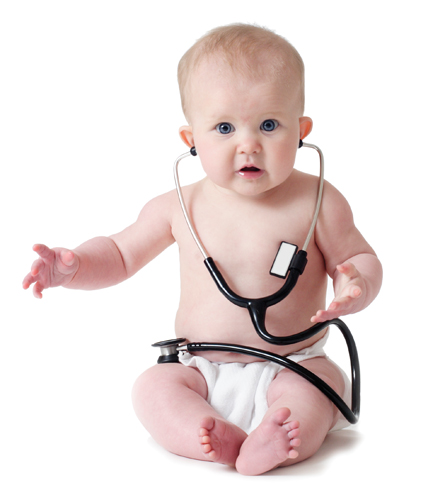The place to be

Have you heard about the Baby-Friendly Hospital Initiative (BFHI)? It’s a global initiative lead by the World Health Organization (WHO) and the United Nation’s Children’s Fund (UNICEF) to encourage practices that promote breastfeeding in hospitals and birthing facilities. (In the U.S., the initiative is headed up by Baby-Friendly USA.) Many hospitals nationwide are working toward this designation (though only about 4 percent have fully attained it). It consists of 10 steps proven to increase both exclusivity and duration of breastfeeding.
To obtain—and retain—a “Baby-Friendly Hospital” designation, hospitals and birthing facilities must adhere to these 10 steps:
- Have a written breastfeeding policy that is routinely communicated to all health care staff.
- Train all health care staff in the skills necessary to implement this policy.
- Inform all pregnant women about the benefits and management of breastfeeding.
- Help mothers initiate breastfeeding within one hour of birth.
- Show mothers how to breastfeed and how to maintain lactation, even if they are separated from their infants.
- Give infants no food or drink other than breast milk, unless medically indicated.
- Practice ”rooming in.” That is, allow mothers and infants to remain together 24 hours a day.
- Encourage breastfeeding on demand.
- Give no pacifiers or artificial nipples to breastfeeding infants.
- Foster the establishment of breastfeeding support groups, and refer mothers to them upon discharge from the hospital or birth center.
If there isn’t a qualifying hospital near you (or if it doesn’t jive with your insurance plan), you can still request that these concepts be put into play. “If a woman is unable to give birth at a baby-friendly hospital, she should become her own advocate for the practices the initiative includes,” says Wendy Haldeman, MN, RN, IBCLC, co-founder of the Pump Station and Nurtury in Santa Monica, California. Include the 10 steps in your birth plan, and stash copies in your hospital bag. You can give the list to your doctor or midwife, labor and delivery nurses, doula and anyone else who plays a part in baby’s grand entrance.







